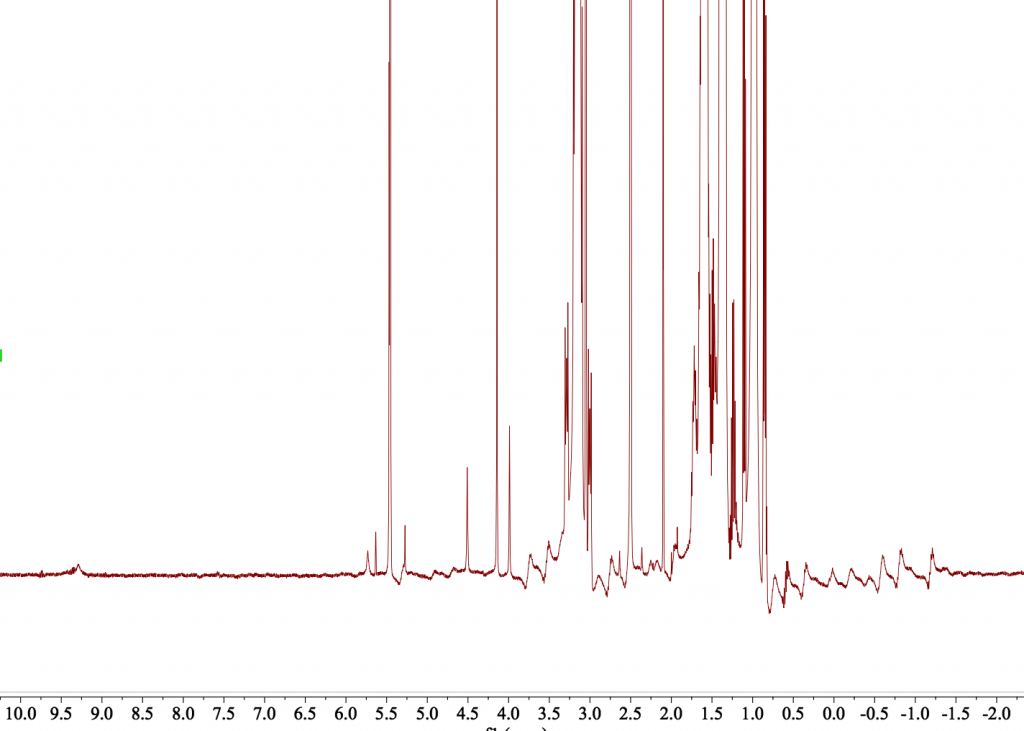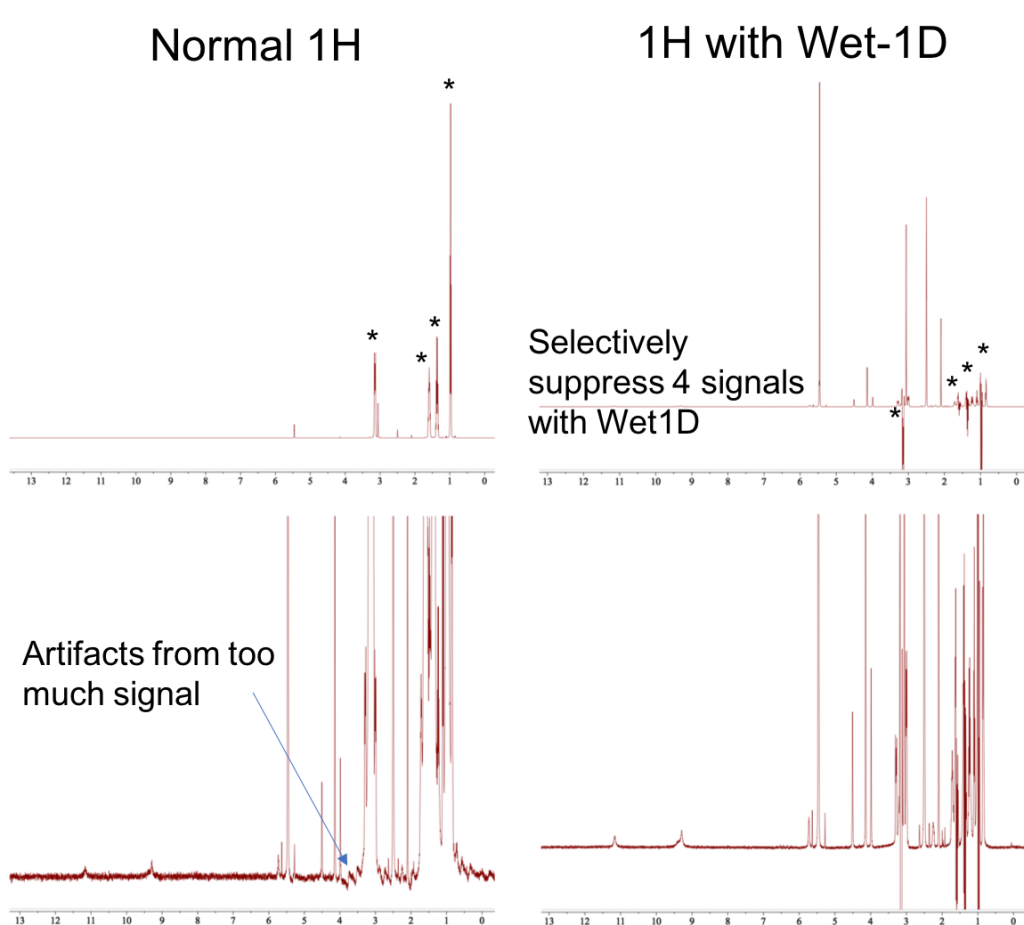5a) Common Problem – Too Much Signal! Solution A) Controlling the Tip Angle
One of the most common issues I see comes from artifacts of too much signal. If your sample is extremely concentrated, you may observe artifacts in the baseline due to saturating your detector. In this example, a user has high concentration of one compound and wishes to suppress artifacts to observe low-concentration material. In this video you will see how to change the tip angle so you can limit the amount of signal that hits the detector. If this doesn’t get you far enough, you may want to try Wet1D to suppress specific resonances (see video 8).

5b) Common Problem – Too Much Signal! Solution B) Wet-1D, for Peak Saturation
If controlling the tip-angle and receiver gain don’t solve your problem entirely (as is the case in the example above), the next thing to try is Wet1D solvent suppression. Here, you can selectively kill large signals so that they are suppressed, and your smaller peaks will become more observable. There are often artifacts with this method, particularly near the saturated peaks and especially when attempting to saturate more than one signal. But this is an excellent tool for when you want to observe small compounds that are drowned-out by large peaks. In this example, 0.1M of compound A is drowning out 0.1mM of Compound B. We use the Wet1D experiment to suppress peaks from Compound A, this way the dynamic range of the receiver can be set to better observe small signals from Compound B.

